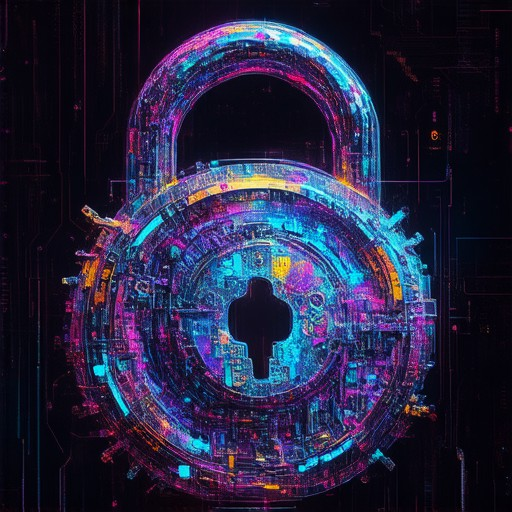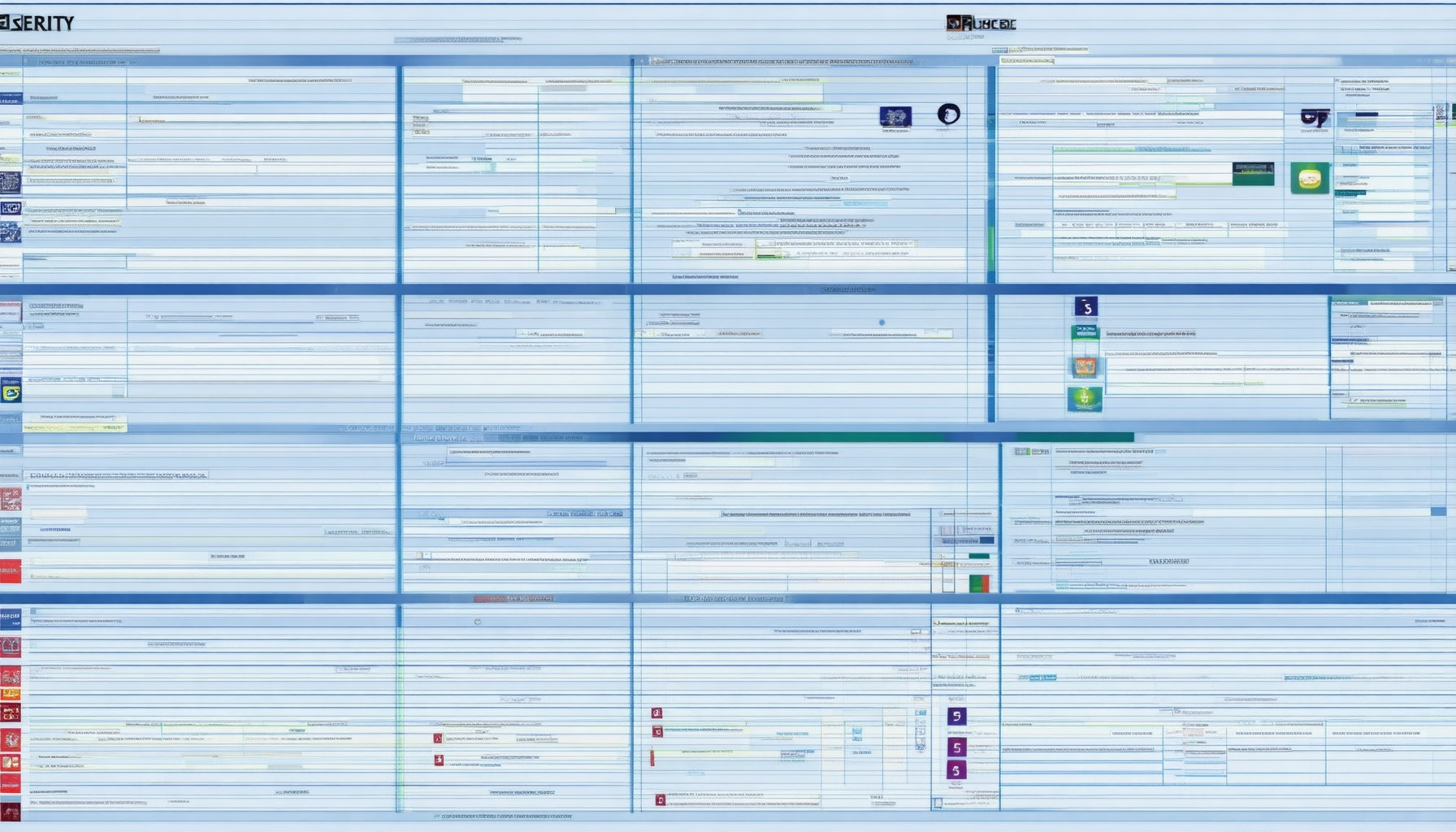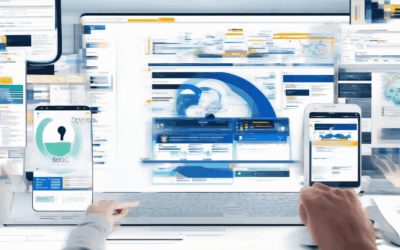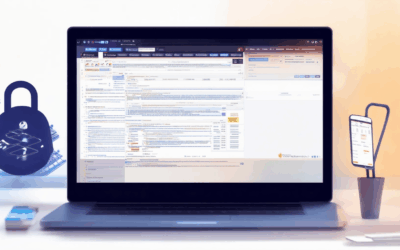In today’s increasingly connected world, digital security has become paramount for individuals and businesses alike. With cyber threats evolving rapidly, safeguarding sensitive information and ensuring the protection of your assets online is no longer optional—it’s a necessity. Whether you’re managing a small business, working remotely, or handling personal finances, having a robust digital security framework in place is critical to mitigating risks and maintaining trust in your operations. A well-crafted digital security checklist can serve as your go-to guide, helping you identify vulnerabilities, implement safeguards, and stay ahead of potential threats. By adhering to a comprehensive checklist, you can ensure that your digital presence is secure, your data is protected, and your reputation remains intact. This guide delves into the essential components of a digital security checklist, offering actionable steps and insights to help you fortify your defenses against cyberattacks.
Key Takeaways
- Understand the 5 D’s (Deter, Detect, Deny, Delay, Defend) to build a robust cybersecurity framework that safeguards your assets online.
- Implement the 5 A’s (Authentication, Authorization, Account Management, Audit Logging, Accountability) to ensure secure system access and protect sensitive data effectively.
- Adopt the 4 P’s (People, Processes, Platforms, Practices) to develop a comprehensive cybersecurity strategy that addresses human, procedural, technological, and behavioral elements of security.

What are the 5 security requirements?
The 5 fundamental security requirements are essential for safeguarding systems, data, and networks. These principles ensure confidentiality, integrity, availability, authentication, and non-repudiation.
1. Confidentiality
- Protect sensitive information from unauthorized access.
- Implement encryption for data transmission and storage.
- Use access controls to restrict who can view or modify information.
- Regularly audit and monitor access to prevent breaches.
2. Integrity
- Maintain accuracy and consistency of data.
- Implement checks and validations to detect unauthorized changes.
- Use cryptographic hashes for data verification.
- Regularly update software and systems to patch vulnerabilities.
3. Availability
- Ensure systems and services are accessible when needed.
- Implement redundancy and failover mechanisms.
- Monitor and manage network traffic to prevent disruptions.
- Regularly test and optimize system performance.
4. Authentication
- Verify identity before granting access.
- Use multi-factor authentication (MFA) for added security.
- Secure passwords and credentials with biometric methods.
- Regularly review and update authentication protocols.
5. Non-Repudiation
- Provide proof of transactions or actions.
- Use digital signatures for official communications.
- Log and record all user actions for auditing purposes.
- Implement secure communication channels to prevent tampering.
By adhering to these security requirements, organizations can protect their assets and ensure reliable operations. Learn more about implementing these principles .
What are the 5 C’s of Cyber Security?
The 5 C’s of cybersecurity are fundamental principles that guide organizations in protecting their digital assets. Understanding these components is crucial for safeguarding sensitive information and ensuring resilience against cyber threats.
- Confidentiality : Ensures that sensitive data remains protected from unauthorized access. This principle is critical in preventing data breaches and maintaining trust with customers and stakeholders.
- Control : Involves implementing measures to manage and mitigate risks. Effective control mechanisms help organizations reduce vulnerabilities and ensure systems operate securely.
- Continuity : Focuses on maintaining operational capabilities despite disruptions. This includes having backup systems and recovery plans in place to minimize downtime during attacks.
- Compliance : Refers to adhering to legal and regulatory standards. Organizations must stay updated on laws and industry standards to avoid penalties and protect their reputation.
- Coverage : Ensures that all aspects of the organization are protected, including people, processes, and technology. Comprehensive coverage helps prevent gaps that attackers could exploit.
By focusing on these five core areas, organizations can build a robust cybersecurity posture that withstands evolving threats and fosters long-term success in the digital landscape.

Examples of Digital Security Measures
- Strong Passwords: Use complex, unique passwords for every account and consider using a password manager to store and manage them securely.
- Two-Factor Authentication (2FA): Enable 2FA for your accounts to add an extra layer of security beyond just a password.
- Endpoint Encryption: Encrypt sensitive data stored on personal and company devices to prevent unauthorized access.
- HTTPS Usage: Always use HTTPS when browsing websites to ensure data is encrypted during transmission.
- Phishing Awareness: Be cautious of suspicious links or emails and verify the authenticity before clicking or interacting.
- Regular Software Updates: Keep all software applications, operating systems, and devices updated to the latest versions to patch security vulnerabilities.
- Network Segmentation: Separate critical systems from less sensitive ones to limit potential damage from breaches.
- Data Backup: Regularly back up important data to an external drive or cloud storage to restore it in case of loss or theft.
- VPN Usage: Use a Virtual Private Network (VPN) when accessing public Wi-Fi to encrypt your internet connection.
- Employee Training: Conduct regular cybersecurity awareness training to educate staff on recognizing and preventing security threats.

What are the 5 D’s of Cyber Security?
The 5 D’s of cybersecurity represent a comprehensive framework for protecting organizations from cyber threats. These principles work together to create robust defense mechanisms against malicious actors. Here’s a breakdown of each component:
- Deter
Deterrence involves making potential attackers believe that the costs of attacking your organization outweigh the benefits. Implementing strong security measures, conducting regular audits, and educating employees can discourage cyberattacks. By creating a culture of security awareness, organizations can significantly reduce their risk profile. - Detect
Detection ensures that any unauthorized access or suspicious activity is identified as early as possible. This layer relies heavily on monitoring tools, intrusion detection systems, and continuous user vigilance. Early detection allows organizations to respond quickly and mitigate damage before it becomes significant. - Deny
Denying access means preventing unauthorized individuals from gaining entry into your systems or data. Strong authentication methods, encryption, and access controls are critical components of this stage. By tightly managing who has access to sensitive information, organizations can minimize the risk of breaches. - Delay
Delaying the impact of a cyberattack gives organizations time to respond effectively. This phase focuses on slowing down or containing the spread of an attack until a full response can be mounted. Techniques like network segmentation, rate limiting, and traffic analysis can help buy time during an incident. - Defend
Defense involves having the capability to counteract and neutralize a cyberattack once it occurs. This includes having incident response plans, backup systems, and the ability to isolate and remove threats from your network. A strong defense requires constant updating and testing to stay effective against evolving threats.
These five pillars work together to create a layered security approach that is difficult for attackers to bypass. By focusing on deterrence, detection, denial, delay, and defense, organizations can significantly enhance their cybersecurity posture and safeguard valuable assets.
The 5 A’s of Security
Security is a critical aspect of protecting sensitive information, ensuring systems remain intact, and maintaining trust in digital platforms. Below are the five key components that form the foundation of security:
1. Authentication
Authentication is the process of verifying who you are. This is often done through passwords, biometric data, or multi-factor authentication (MFA). Strong authentication ensures that only authorized individuals gain access to systems or data.
2. Authorization
Authorization refers to the permission granted to users or systems to access specific resources. It involves setting up roles, permissions, and ensuring that users only interact with what they are allowed to access. Proper authorization prevents unauthorized access and misuse of data.
3. Account Management
Account management involves creating, updating, and deleting user accounts. It also includes managing access rights and ensuring that accounts are securely maintained. Regular review and updates to account information help reduce risks of compromised credentials.
4. Audit Logging
Audit logging tracks and records security-related events, such as login attempts, file accesses, or policy violations. This helps in monitoring activities, detecting breaches, and providing evidence for incident response. Logs should be stored securely and regularly reviewed.
5. Accountability
Accountability ensures that individuals and systems are held responsible for their actions. It involves tracking behavior, assigning blame when something goes wrong, and enforcing consequences. Accountability measures are crucial for maintaining trust and ensuring compliance with security policies.
By focusing on these five key areas, organizations can significantly enhance their security posture and safeguard against potential threats. Implementing robust solutions in each area not only protects data but also builds confidence among users and stakeholders.

What are the 4 Ps of Cybersecurity?
The 4 Ps of cybersecurity refer to four critical components that organizations and individuals must consider to protect themselves from cyber threats. These principles form the foundation of effective cybersecurity strategies:
- People
- Employees and stakeholders play a vital role in cybersecurity. They need to understand their responsibilities, comply with security protocols, and report potential risks.
- Training and awareness programs are essential to empower individuals with knowledge and skills to identify and mitigate security risks.
-
Processes
- Establishing robust processes ensures that organizational activities align with security goals. This includes creating policies, procedures, and workflows that minimize vulnerabilities.
- Regular audits and assessments help identify gaps and ensure continuous improvement in security measures.
-
Platforms
- The technology and tools used to manage cybersecurity are crucial. This includes infrastructure, software, and cloud solutions that support secure operations.
- Securing platforms involves implementing strong authentication, encryption, and access control mechanisms to safeguard sensitive data.
-
Practices
- Adopting best practices ensures consistent security outcomes. This includes regular updates, patch management, and incident response planning.
- Collaboration with experts and leveraging automated tools can enhance the effectiveness of security practices.
By focusing on these four Ps—People, Processes, Platforms, and Practices—organizations can build a resilient cybersecurity posture that withstands evolving threats.




